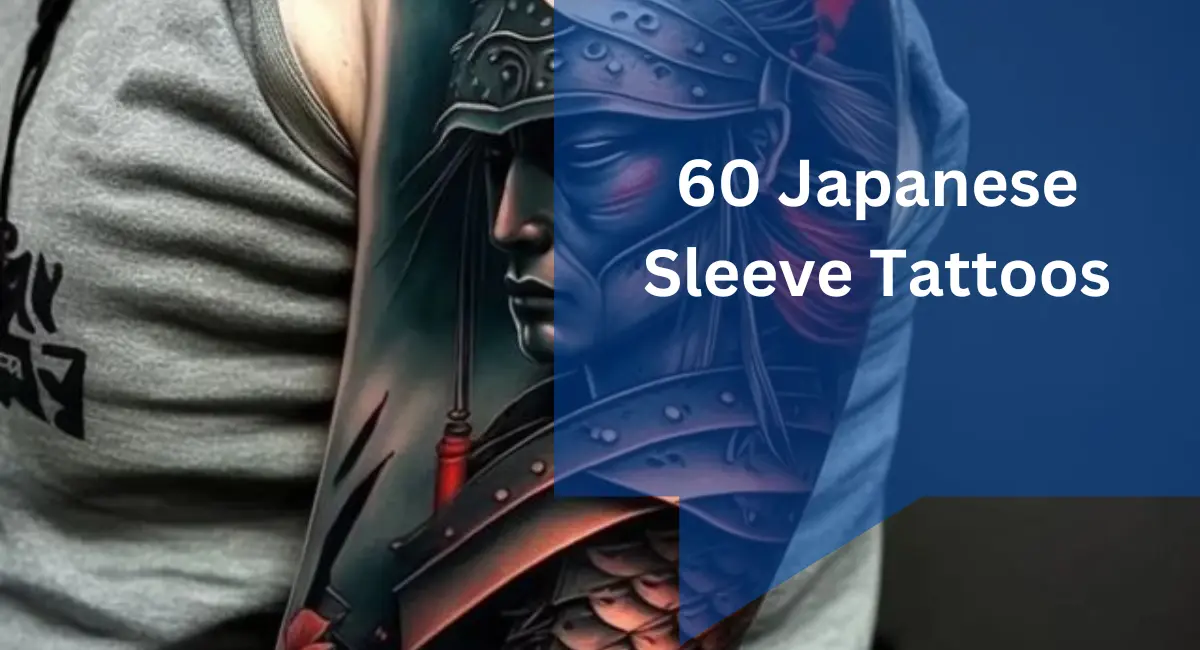In the world of body art, few styles inspire awe and intrigue like the intricate, vibrant narratives woven onto the skin in Japanese sleeve tattoos.
These elaborate designs, known as “full sleeves” or “fullsuit” tattoos, are not just artistic expressions, but a window into the rich history, symbolism, and cultural significance of Japanese tattooing, a practice known as irezumi (入れ墨).
The Early Rise of Irezumi
The origins of Japanese tattooing remain somewhat shrouded in mystery, with evidence of its existence dating back to the 3rd century CE.
Early depictions in historical texts and artistic interpretations suggest that irezumi was initially used for social differentiation and punishment. Criminals were marked with specific symbols, while firefighters and laborers displayed tattoos depicting protective deities or symbols of resilience.
However, by the Edo period (1603-1868), irezumi began to take on a more artistic and cultural significance. The flourishing of woodblock prints, known as ukiyo-e, significantly influenced tattoo designs.
Bold lines, vibrant colors, and iconic characters like dragons, koi fish, and kabuki actors found their way onto the skin, transforming irezumi into a vibrant art form.

Deciphering the Language of the Skin
Japanese sleeve tattoos are more than just beautiful pictures; they are intricate narratives woven with layers of symbolism.
Each element, from the choice of characters to the color palette, holds a specific meaning, reflecting the wearer’s personality, aspirations, or cultural heritage.
Popular motifs include:
- Dragons: Symbolizing power, protection, and good luck.
- Koi Fish: Representing perseverance and overcoming challenges.
- Cherry Blossoms: Depicting the ephemeral nature of life and beauty.
- Tigers: Embodying courage, strength, and ferocity.
- Waves: Signifying resilience and the ever-changing nature of life.
These symbols are often combined and arranged to tell a story, a personal narrative unique to the wearer.
For example, a koi fish battling its way upstream could represent the individual’s struggle to achieve a goal, while a majestic dragon might symbolize the wearer’s inner strength and power.
The Meiji Restoration and the Decline of Irezumi
The Meiji Restoration in 1868 marked a significant turning point in the history of Japanese tattooing. To modernize and westernize the nation, the new government issued an edict banning irezumi. This ban, coupled with the growing influence of Western culture, led to a decline in the practice for several decades.
However, the art form didn’t vanish entirely. Tattooing continued underground, practiced by a select group of yakuza (Japanese organized crime) members and individuals who defied societal norms.
Irezumi Meets the Global Stage
The late 20th century witnessed a resurgence of interest in Japanese tattooing. Tattoo artists outside of Japan began to explore and master the traditional techniques, leading to a global appreciation for this unique art form.
This resurgence also brought about innovations and modifications. New color palettes and artistic interpretations emerged, reflecting the evolution of the art form while staying true to its core principles.
Today, Japanese sleeve tattoos are not only appreciated for their aesthetic beauty but also recognized as a cultural heritage worthy of preservation. Artists worldwide continue to learn and adapt the ancient techniques, ensuring the legacy of irezumi lives on and continues to inspire future generations.
Beyond Tradition and Modernity
Examining the evolution of Japanese sleeve tattoos reveals a fascinating interplay between tradition and modernity.
From its humble beginnings to its flourishing artistic expression and subsequent decline, followed by a dynamic resurgence, the history of irezumi reflects the ever-evolving cultural landscape of Japan.
As the art form continues to evolve in the 21st century, one thing remains certain: the captivating stories woven onto the skin in Japanese sleeve tattoos will continue to captivate audiences worldwide, serving as a testament to the enduring human desire for self-expression and the power of art to transcend cultural boundaries.
Koi Tattoo Half Sleeve
A Koi tattoo half sleeve is a stunning artwork that typically starts at the shoulder and extends halfway down the arm. Inspired by Japanese culture, it symbolizes perseverance, determination, and transformation.
With vibrant colors and intricate designs, it captures the elegance of the Koi fish swimming against adversity, making it a powerful statement of resilience and inner strength.
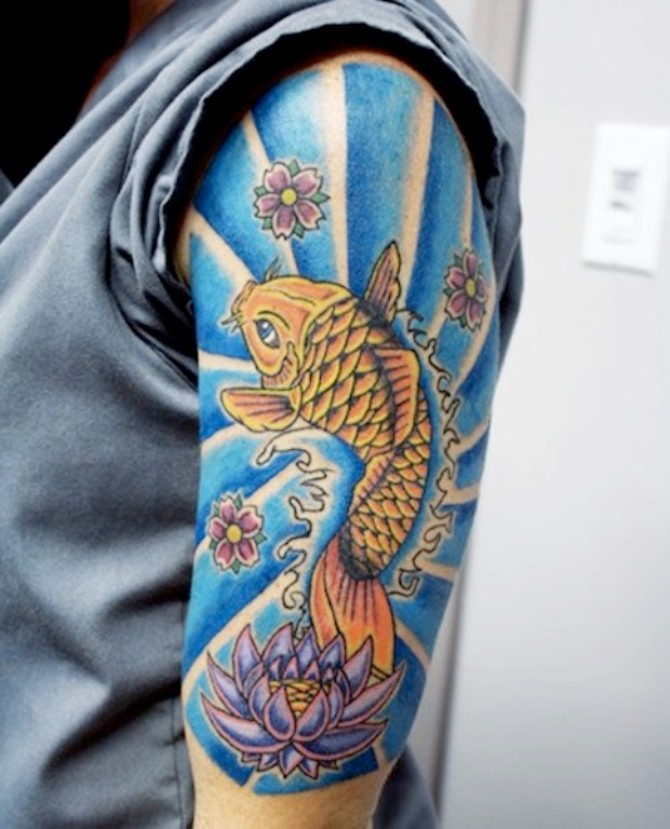
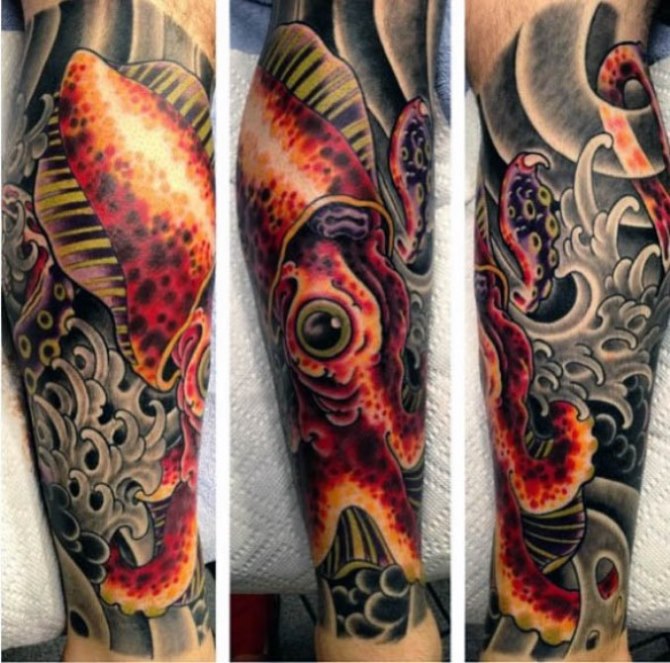
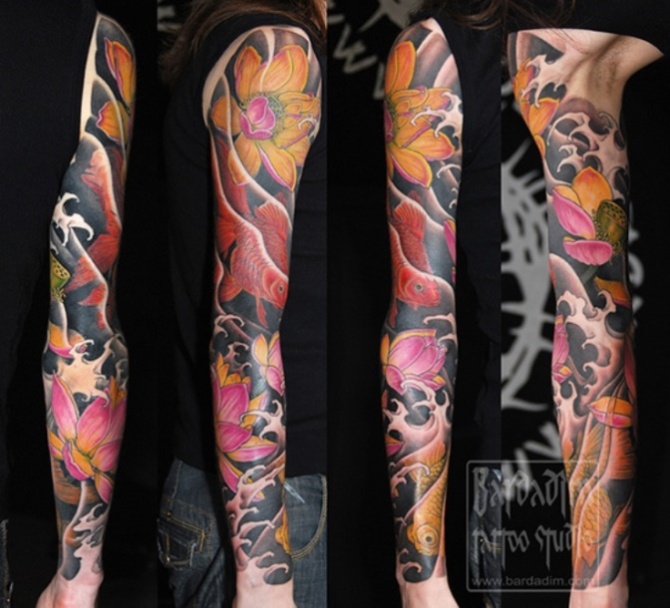
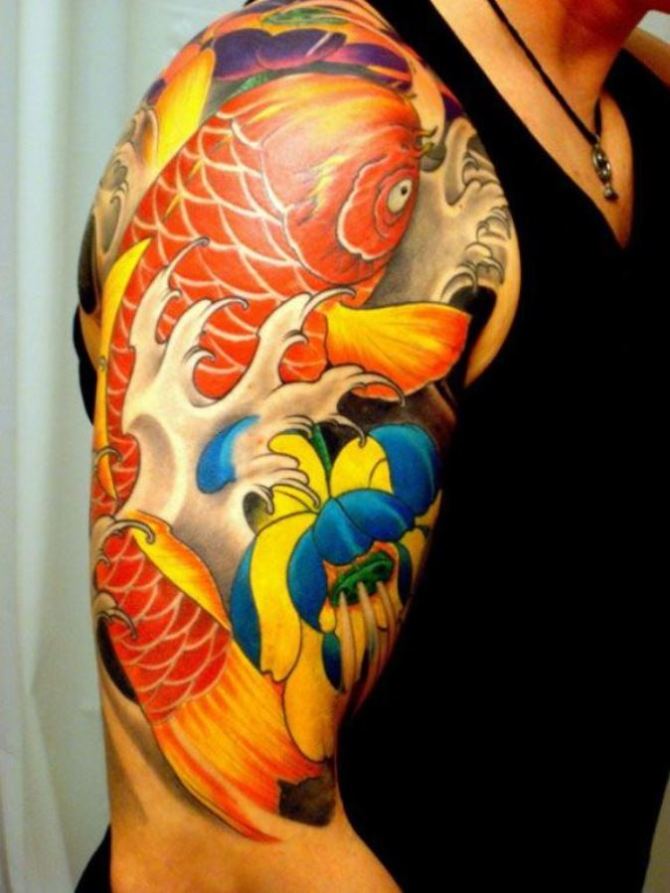
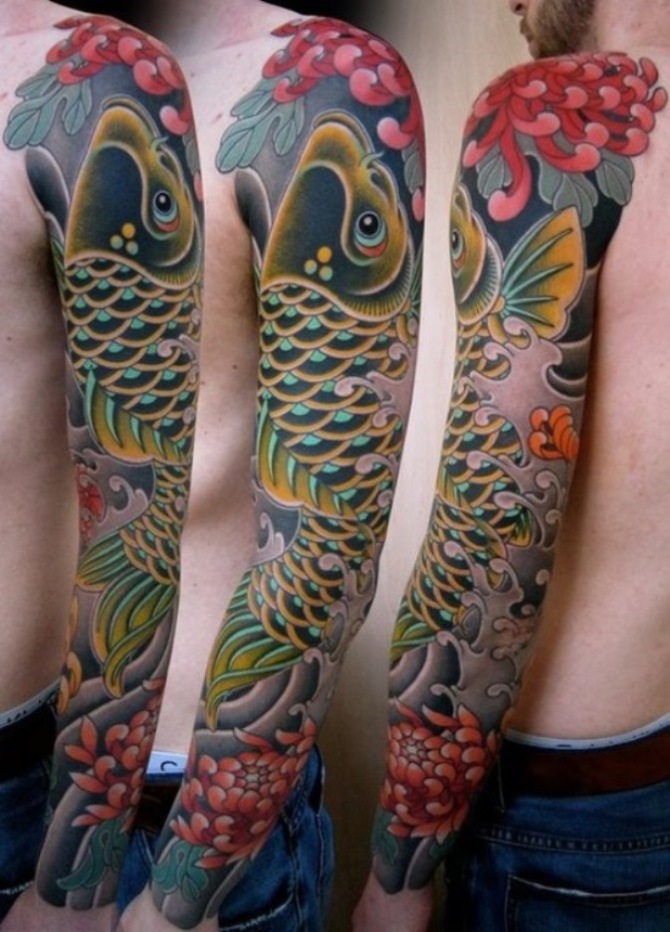
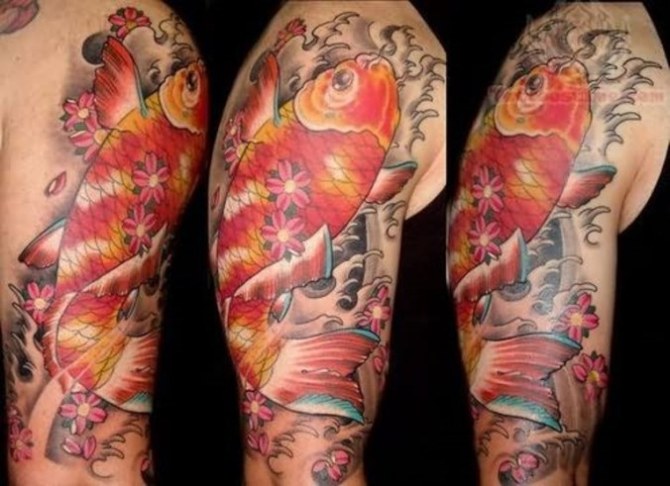
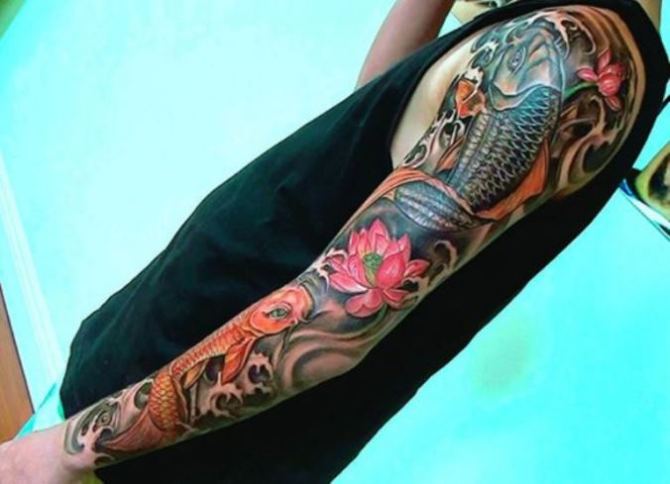
Buddha Tattoo
A Buddha tattoo embodies enlightenment, peace, and spiritual awakening. It serves as a reminder of Buddhist teachings, such as mindfulness and compassion.
Each design may reflect personal beliefs, with variations like a meditating Buddha or the lotus symbolizing purity amidst adversity. It’s a deeply meaningful choice, often embraced for its serene and profound symbolism.
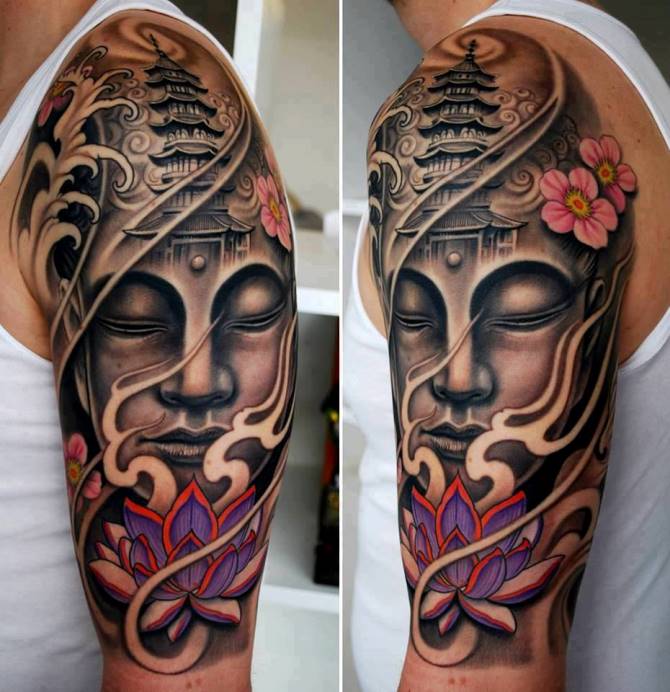
Japanese Water Sleeve Tattoo
The Japanese Water Sleeve Tattoo is a stunning artwork deeply rooted in Japanese culture. It typically features motifs like koi fish, water waves, and lotus flowers, symbolizing strength, perseverance, and enlightenment.
These intricate designs often extend from shoulder to wrist, creating a dynamic portrayal of nature’s fluidity and the wearer’s inner resilience.
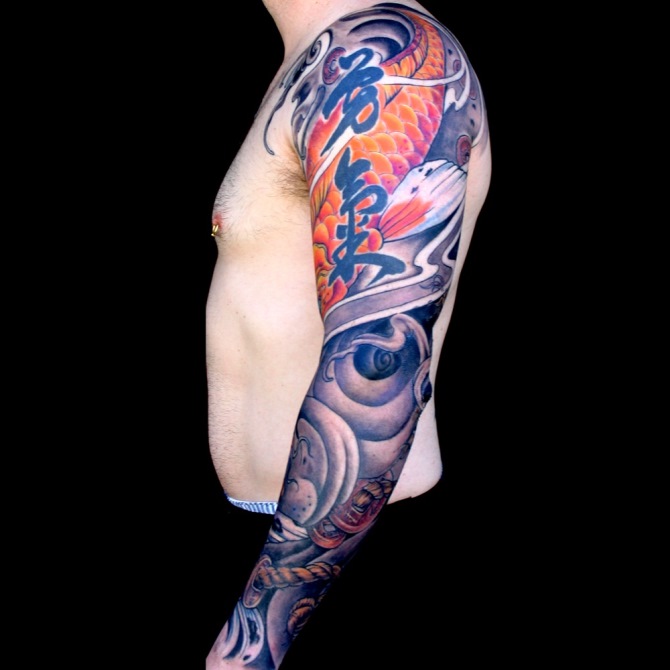
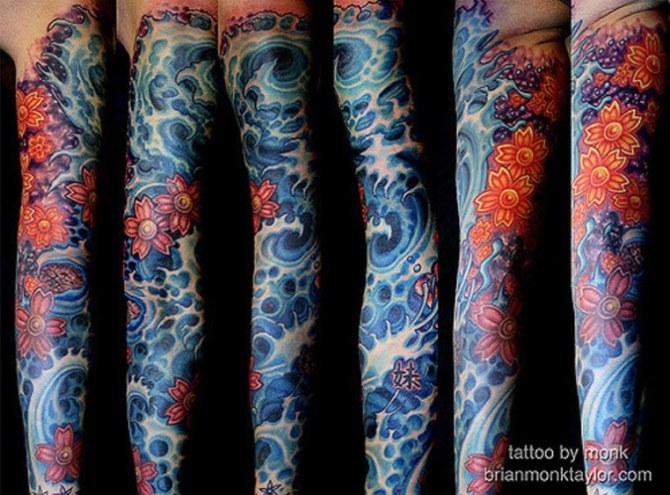
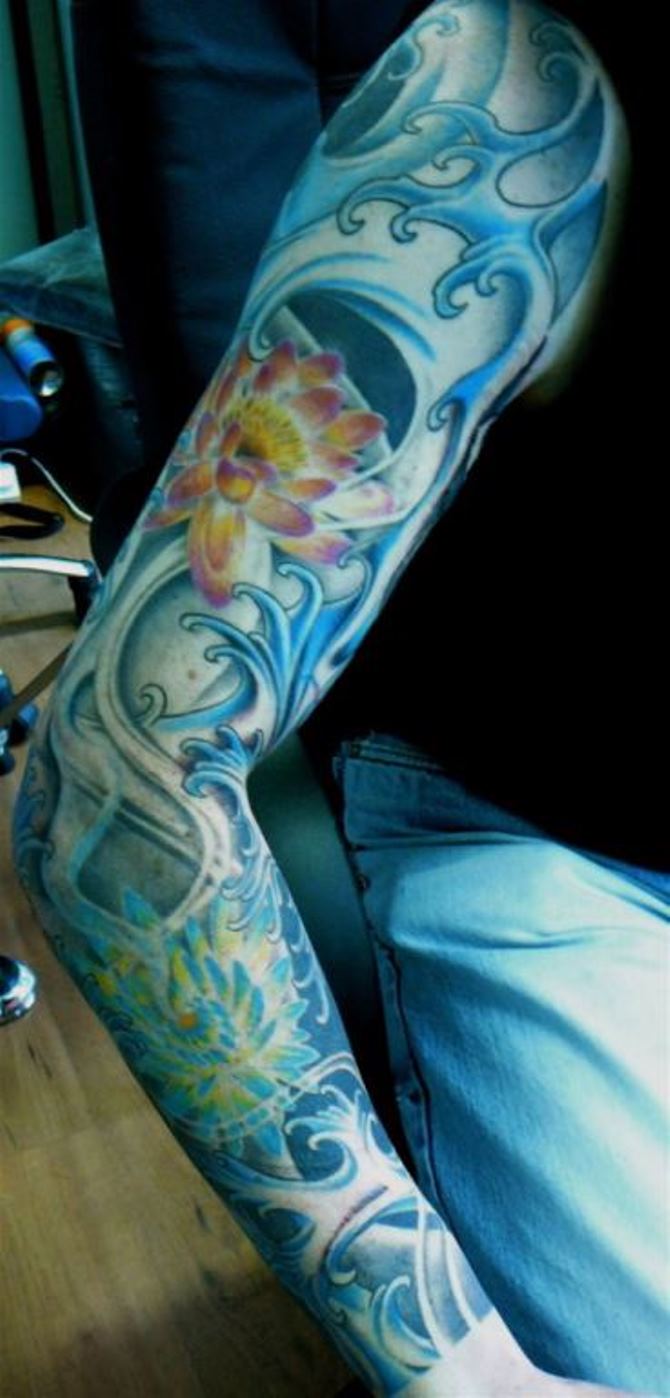
Japanese Dragon Tattoo
Japanese Dragon Tattoos hold deep cultural significance, representing wisdom, strength, and protection. In Japanese folklore, dragons are revered creatures, associated with water and the sky.
These tattoos often feature intricate designs with vibrant colors, showcasing the dragon’s majestic presence. They symbolize courage and the ability to overcome obstacles, embodying the wearer’s inner power and resilience.
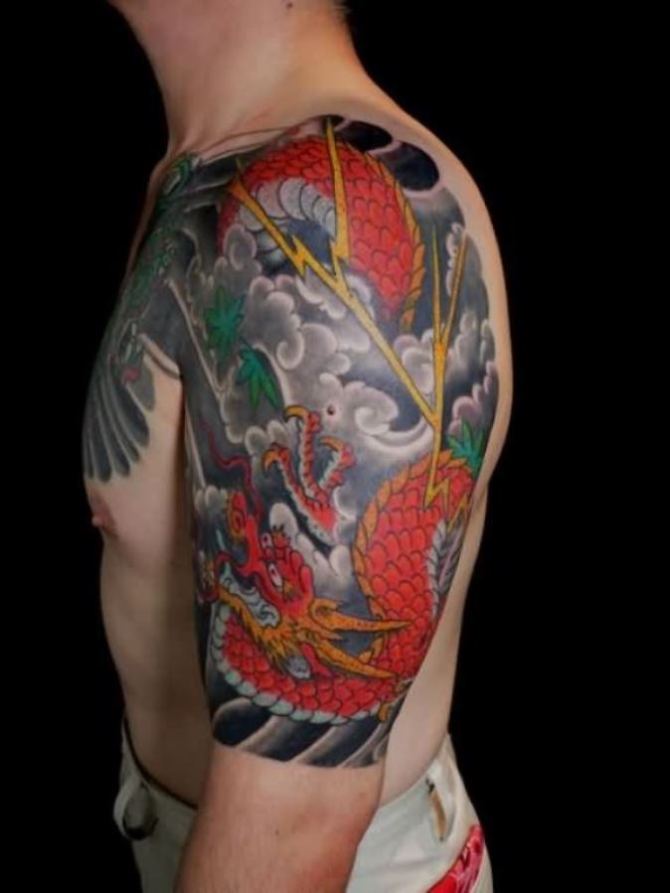
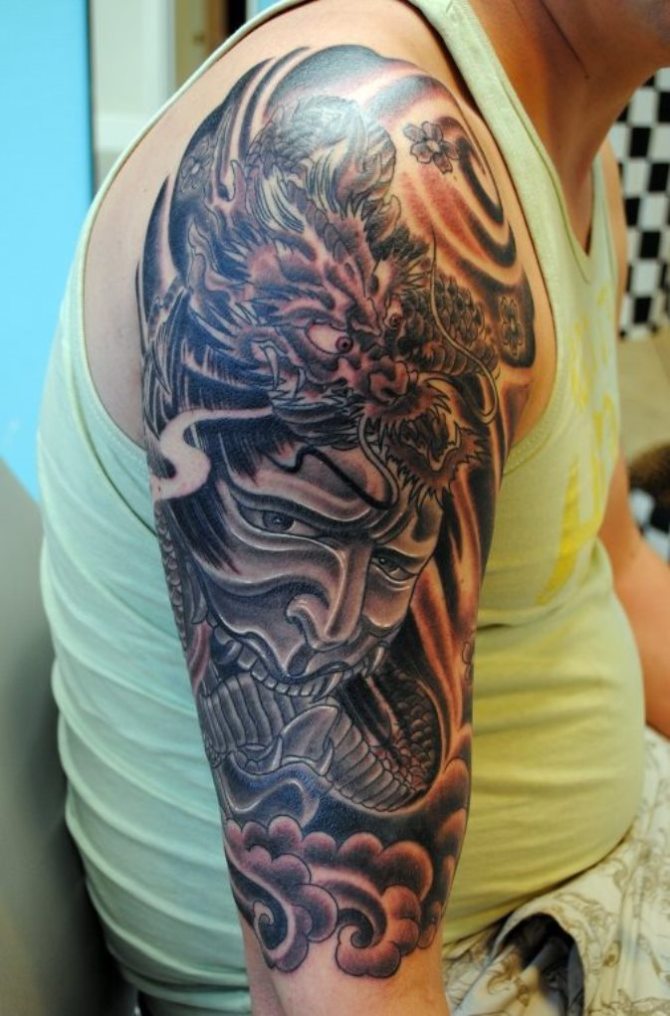
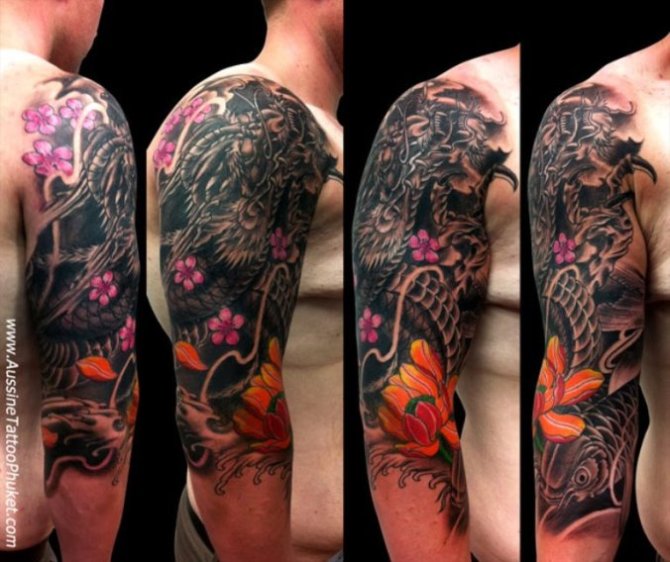
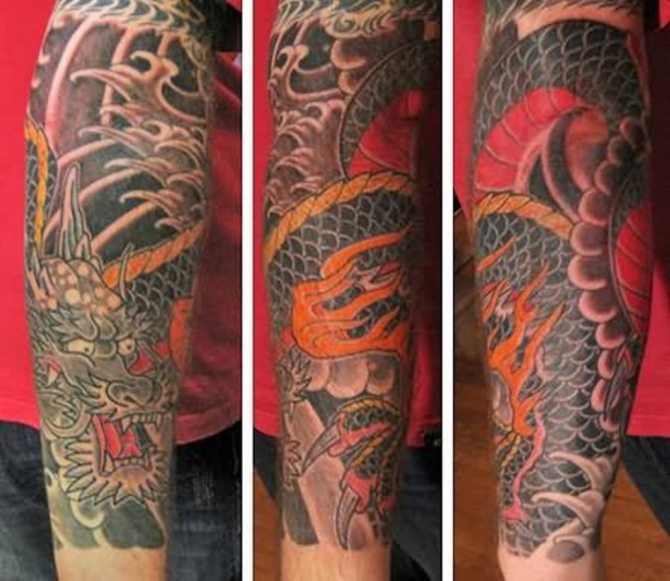
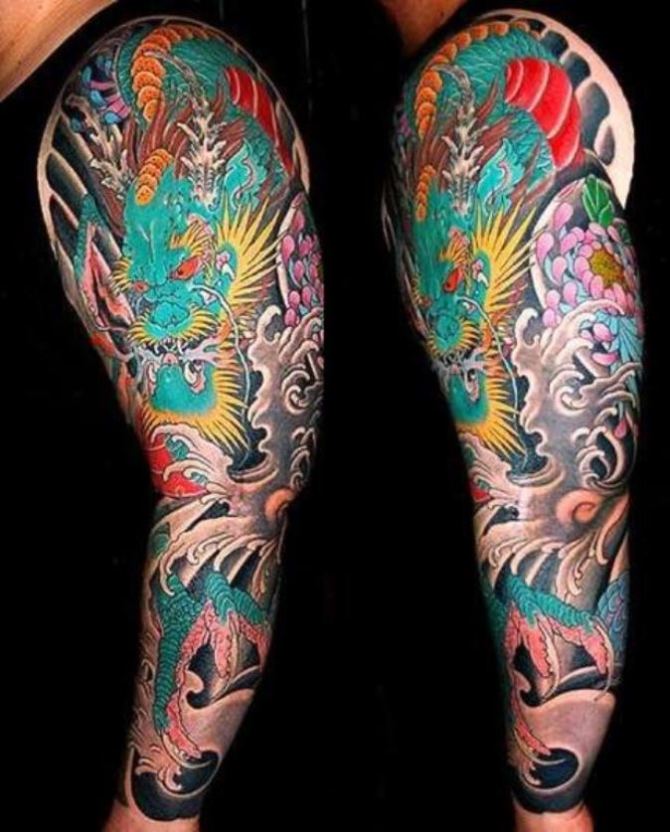
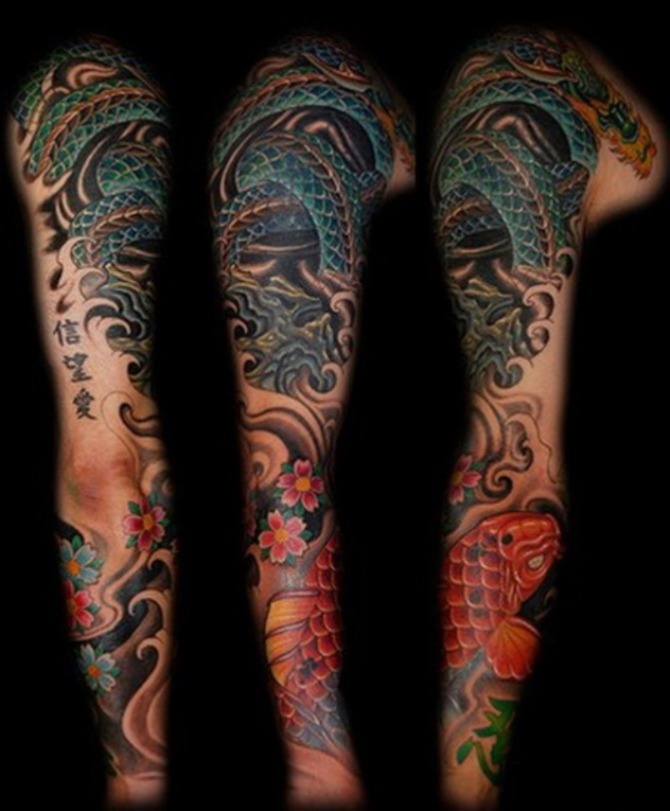
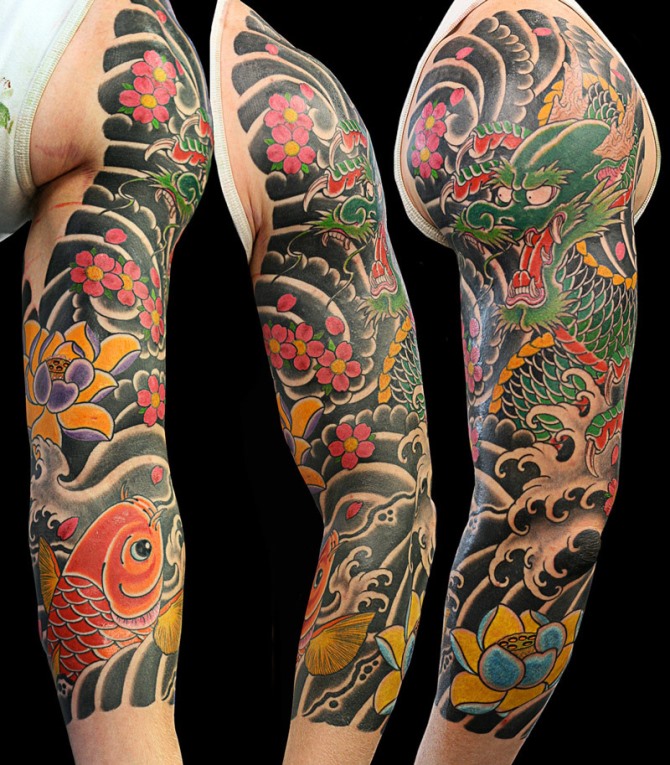
Cherry Blossom Tattoo
Cherry blossom tattoos capture the ephemeral beauty and symbolism of these delicate flowers. Inspired by Japanese culture, they represent renewal, beauty, and the fleeting nature of life.
Each petal holds meaning, embodying themes of transience and the appreciation of the present moment. These tattoos often symbolize a connection to nature and the embrace of life’s impermanence.
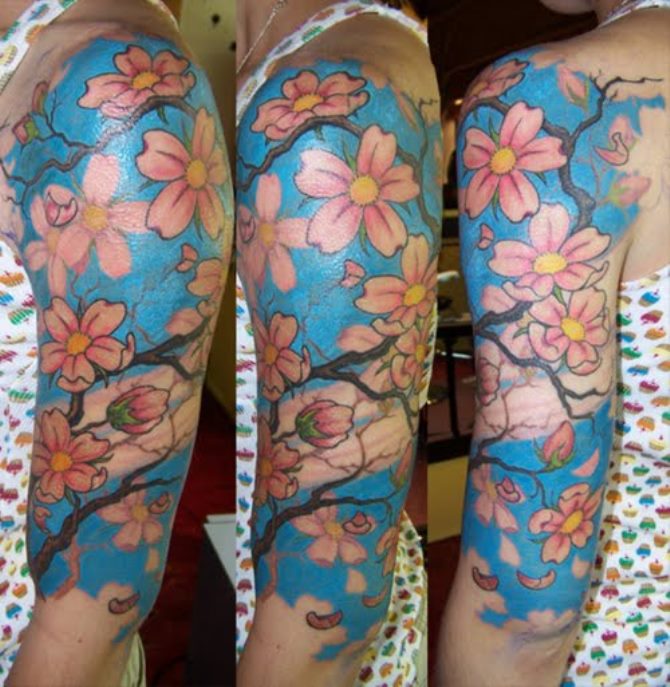
Male Arm Tattoo Blosed
The Male Arm Tattoo Blosed is a striking design featuring bold linework and intricate shading. Inspired by traditional Japanese irezumi art, it typically depicts mythical creatures like dragons or fierce animals like lions.
The design wraps around the arm, emphasizing strength and masculinity while showcasing the wearer’s appreciation for timeless tattoo craftsmanship.
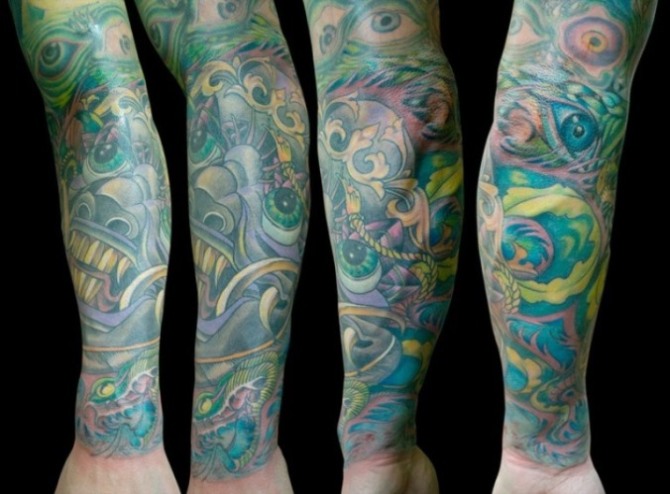
Japanese Half Sleeve Tattoo
The Japanese half sleeve tattoo, rooted in centuries-old tradition, blends symbolic imagery like koi fish, cherry blossoms, and dragons. It symbolizes strength, resilience, and honor, often depicting intricate scenes from Japanese folklore or nature.
Each element holds profound meaning, reflecting the wearer’s journey, values, and aspirations with striking artistry.
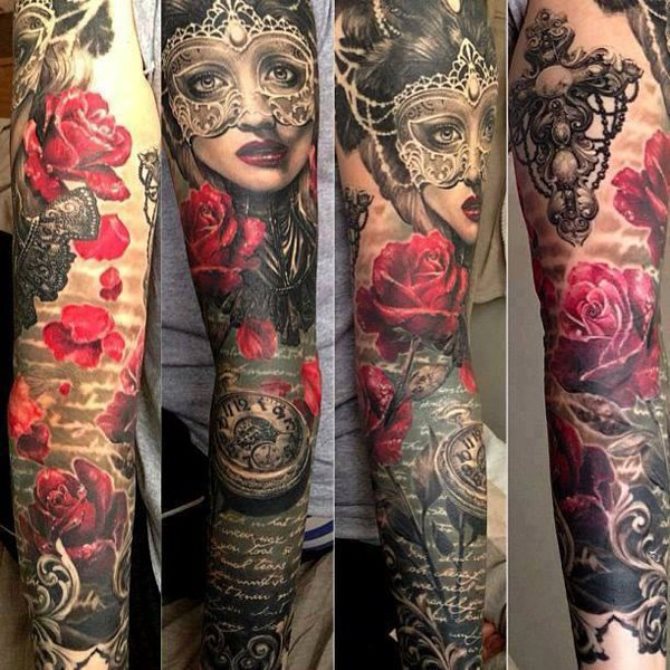
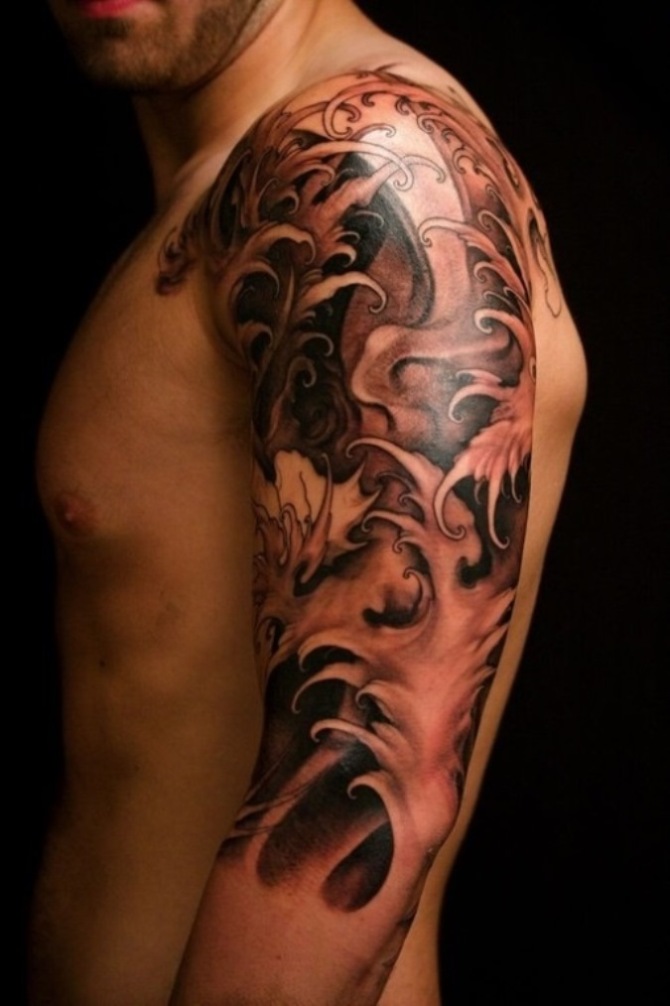
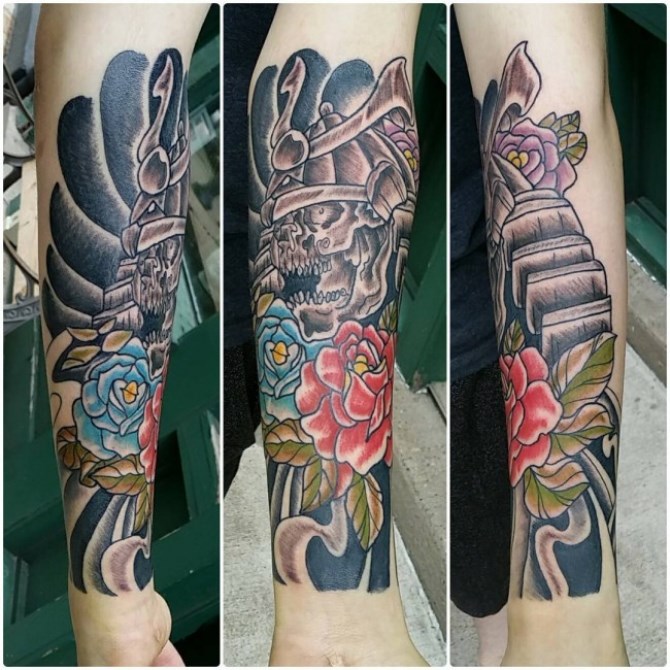
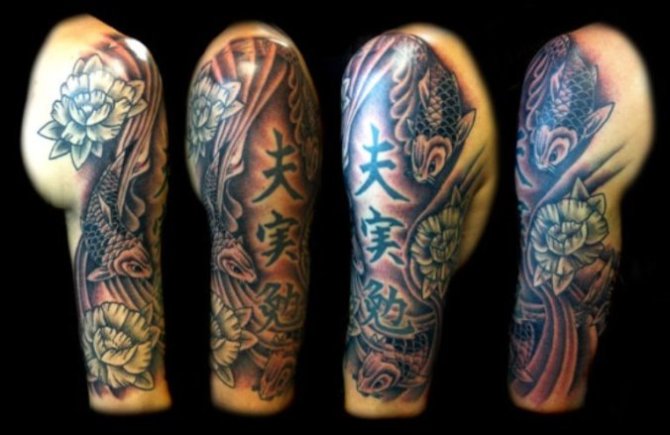
Hannya Mask Tattoo Sleeve
A Hannya mask tattoo sleeve is a stunning display of Japanese folklore and artistic expression. The Hannya mask represents a jealous and vengeful female spirit from Noh theater, embodying the complexities of human emotions.
A sleeve tattoo featuring this mask often signifies a struggle with inner demons, transformation, and the balance between beauty and ferocity in life.
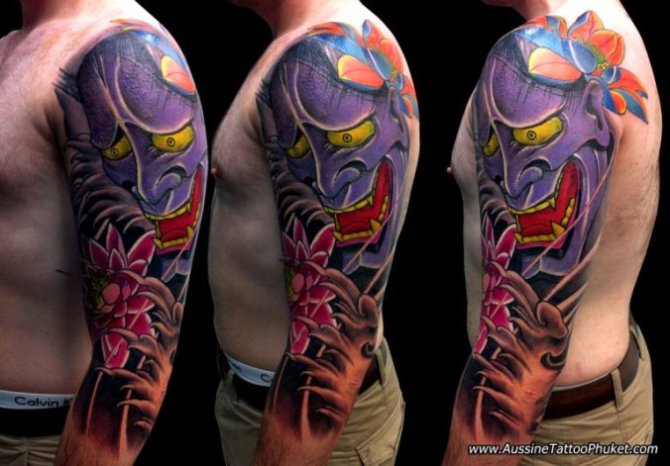
Phoenix Tattoo Sleeve Japanese
A Phoenix Tattoo Sleeve in the Japanese style embodies resilience, renewal, and rebirth. Inspired by Japanese mythology, the phoenix represents overcoming adversity and emerging stronger.
With vibrant colors and intricate details, this sleeve design captures the essence of the phoenix’s fiery spirit and the intricate artistry of traditional Japanese tattooing, known as irezumi.

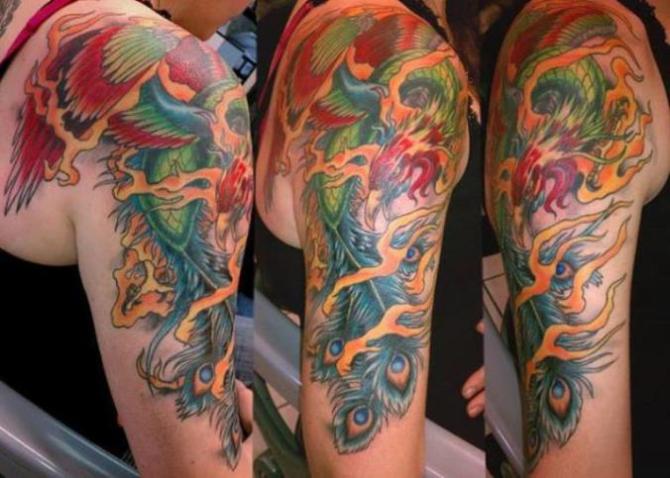
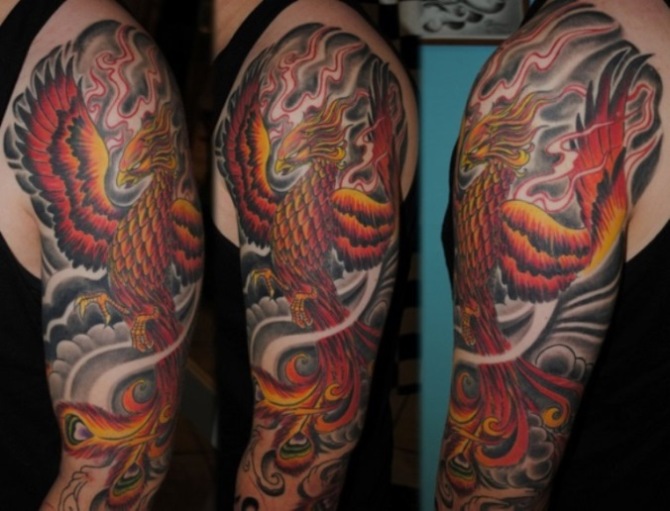
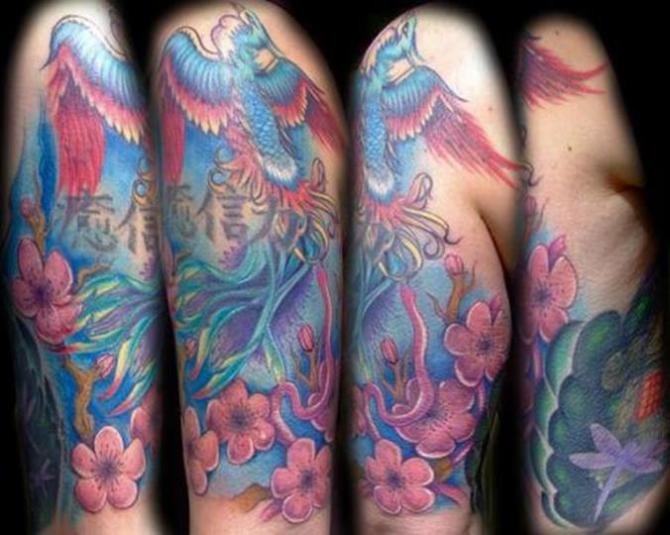
Japanese Quarter Sleeve Tattoo
A Japanese quarter sleeve tattoo blends traditional Japanese motifs like koi fish, cherry blossoms, or dragons with modern artistic styles. These tattoos often extend from the shoulder to halfway down the forearm, showcasing intricate designs and vibrant colors.
They symbolize elements of Japanese culture, such as strength, resilience, and beauty, while also reflecting the wearer’s personal journey and values.
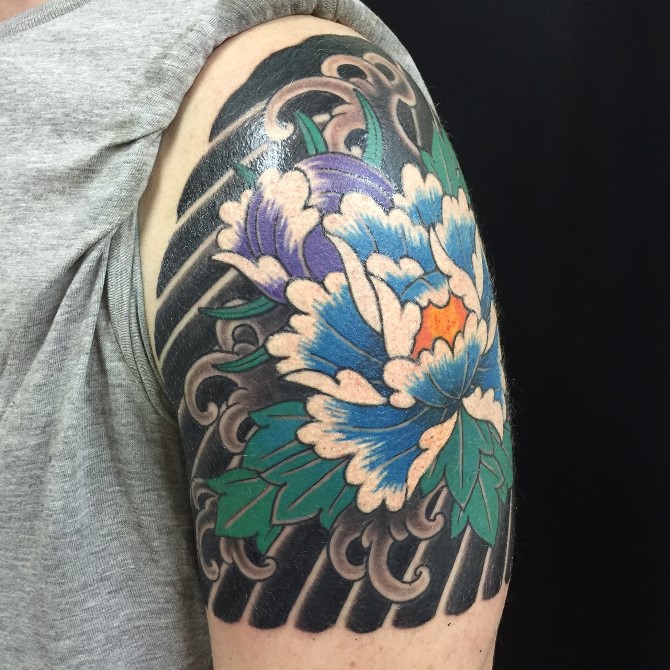
Japanese Samurai Tattoo Sleeve
A Japanese Samurai Tattoo Sleeve is a striking homage to the Bushido code and samurai culture. It typically features intricate designs of samurai warriors, cherry blossoms, dragons, and kanji characters symbolizing honor, loyalty, and bravery.
Each element tells a story of the warrior’s journey, embodying a blend of tradition, artistry, and martial prowess on the wearer’s arm.
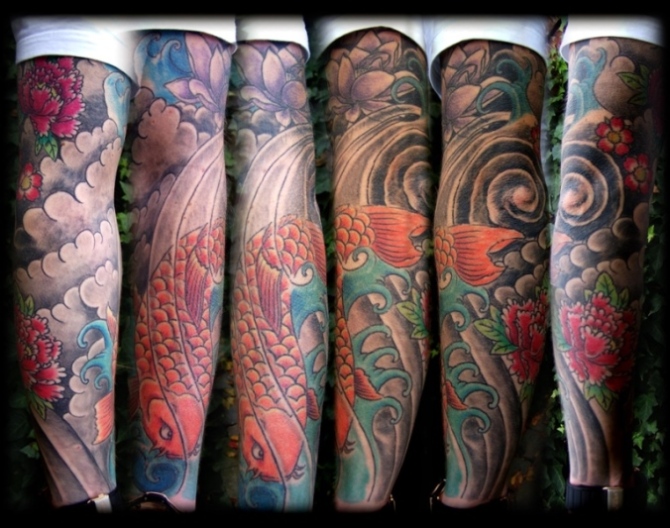
Flower Tattoo Sleeve
A flower tattoo sleeve is a stunning artistic expression where intricate floral designs wrap around the arm, creating a cohesive and beautiful composition.
Each flower chosen holds its own symbolism, such as roses for love or lotus for enlightenment, allowing individuals to convey personal meanings through their body art while embracing the natural beauty of blooms.
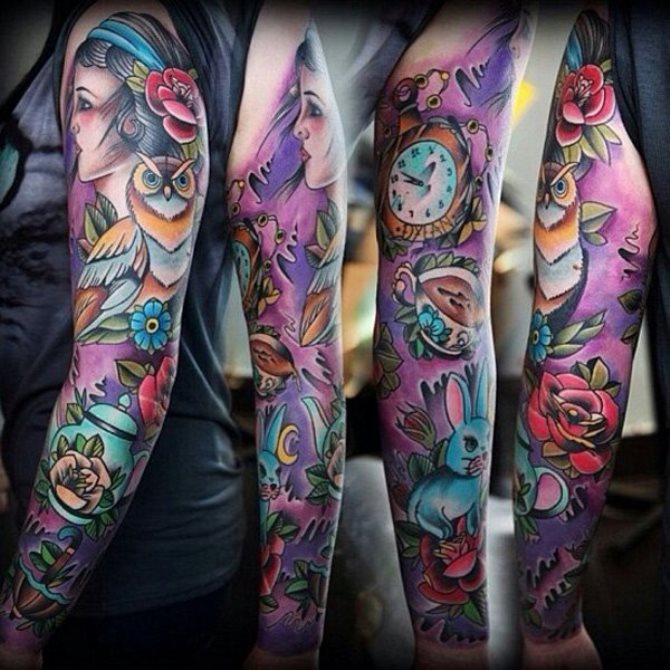
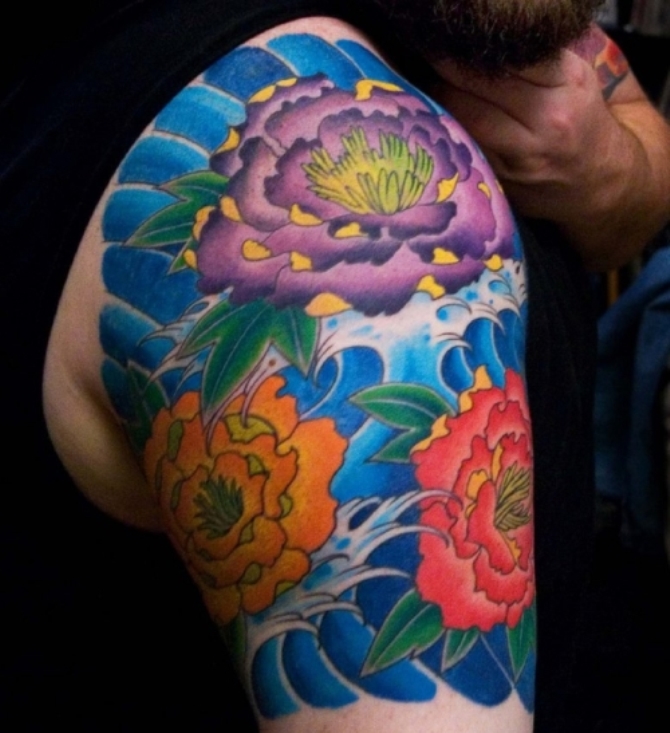
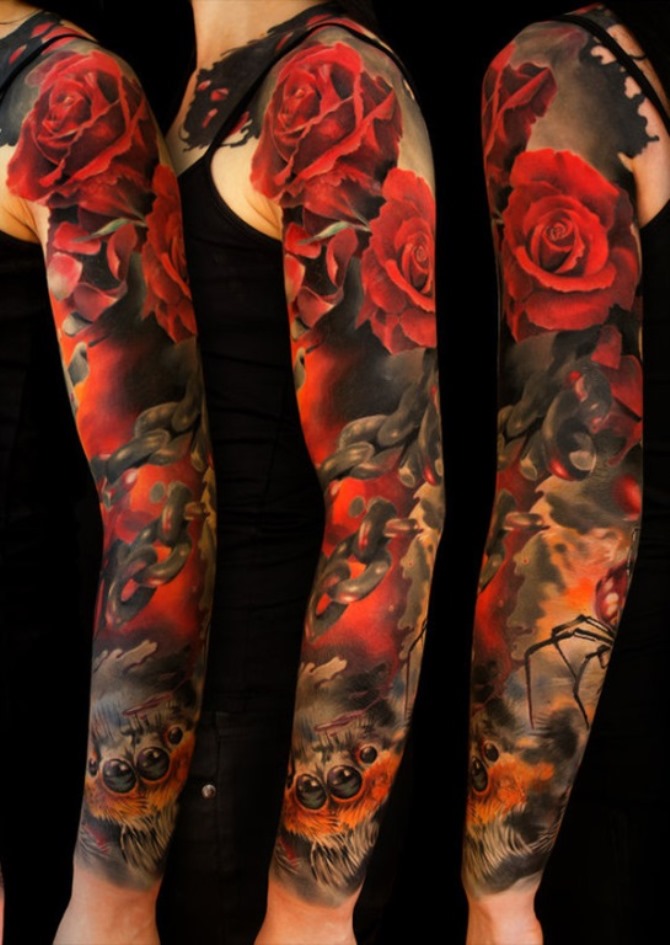
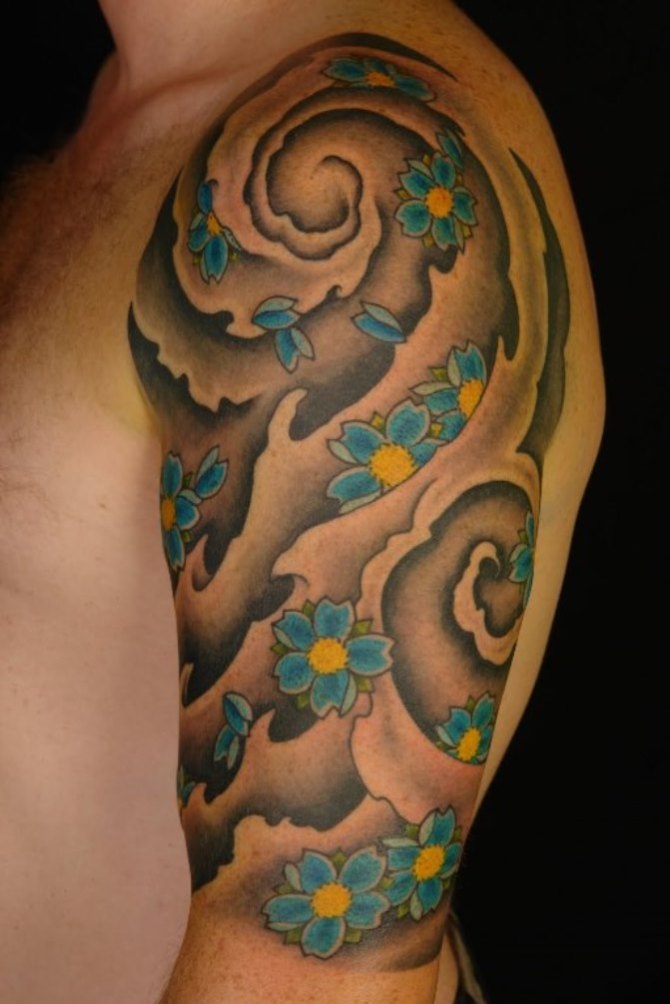
Japanese Foo Dog Art
Japanese Foo Dog Art, known as “Komainu” in Japanese, showcases mythical lion-like creatures guarding shrines and temples. These fierce yet protective figures symbolize warding off evil spirits and maintaining harmony.
With intricate details and dynamic poses, Japanese Foo Dog Art reflects the rich cultural and spiritual traditions of Japan, embodying strength, loyalty, and divine protection.
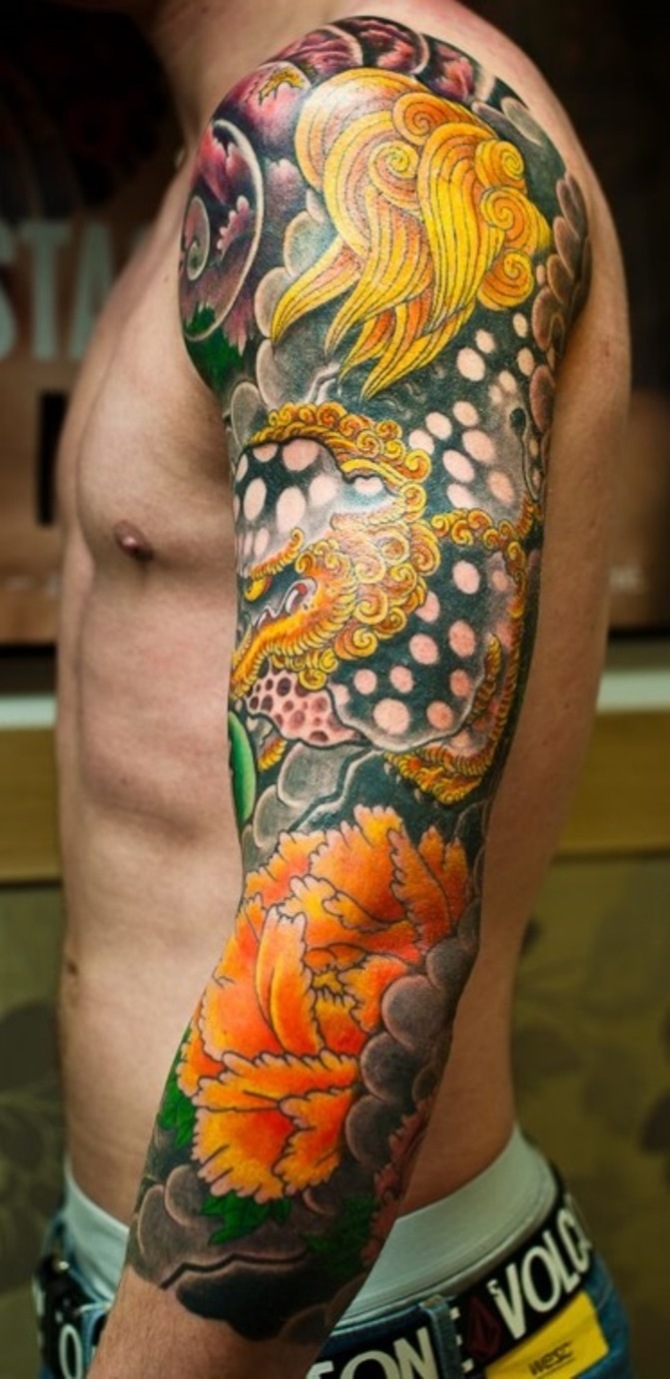
Japanese Snake Tattoo Sleeve
The Japanese Snake Tattoo Sleeve blends ancient symbolism with contemporary artistry. Inspired by traditional Japanese irezumi, it embodies various meanings including protection, wisdom, and transformation.
With intricate designs and vibrant colors, each scale tells a story, symbolizing resilience and renewal. This sleeve tattoo is not just body art; it’s a visual narrative of strength and adaptation.
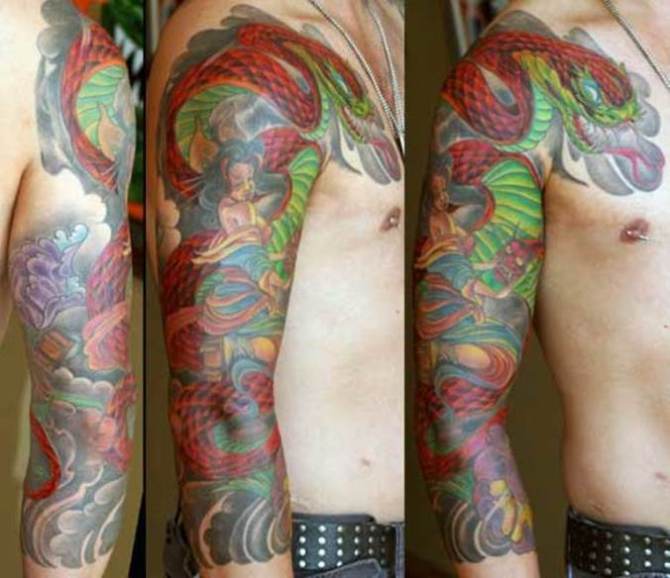
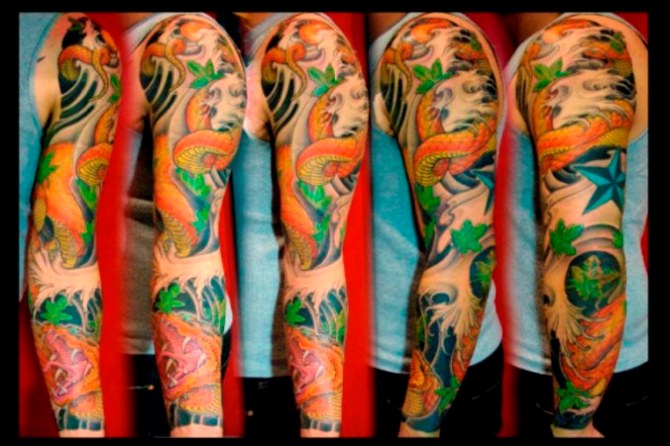
Japanese Half Sleeve Tattoo
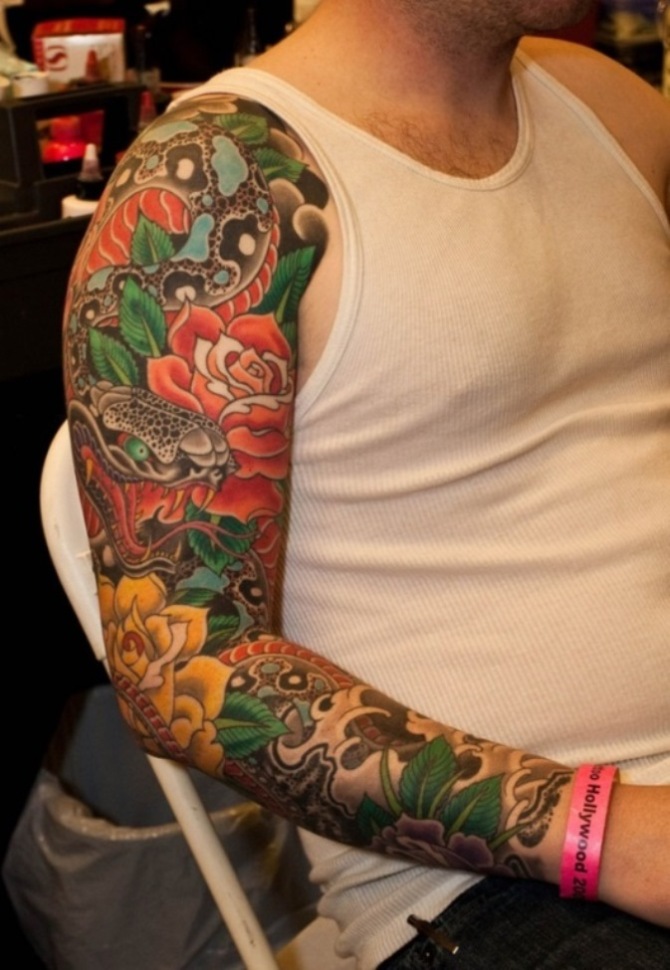
A Japanese half sleeve tattoo is a captivating blend of traditional Japanese motifs such as cherry blossoms, koi fish, and dragons, meticulously crafted to adorn the wearer’s arm from shoulder to elbow.
Each element holds deep cultural significance, conveying themes of strength, resilience, and spiritual symbolism, creating a mesmerizing visual narrative steeped in tradition and artistry.
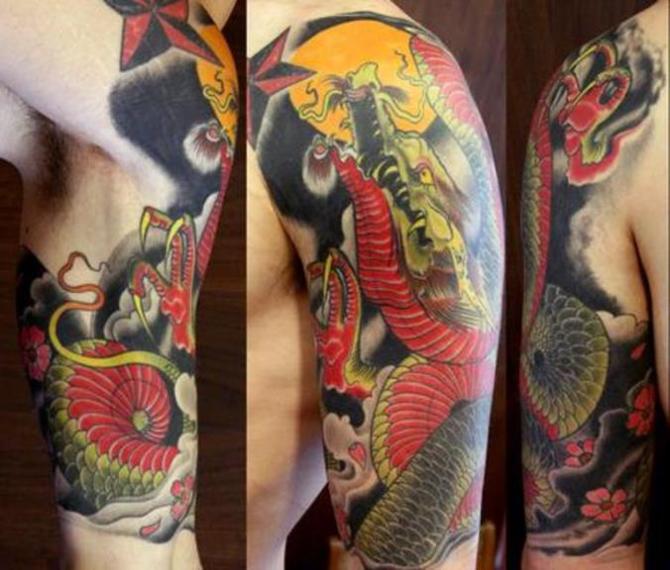
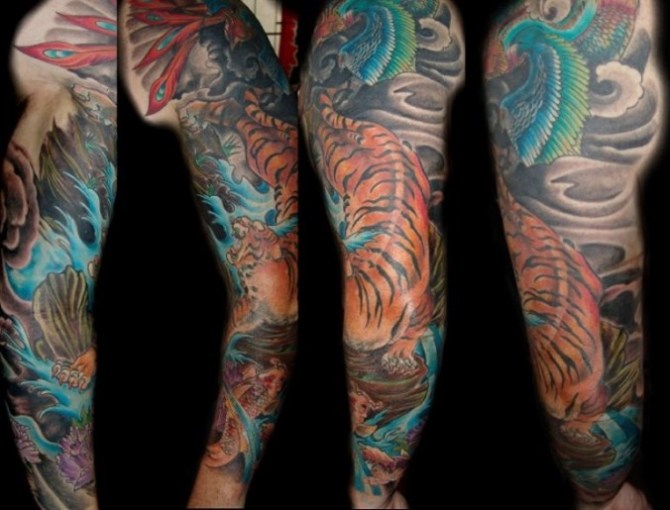
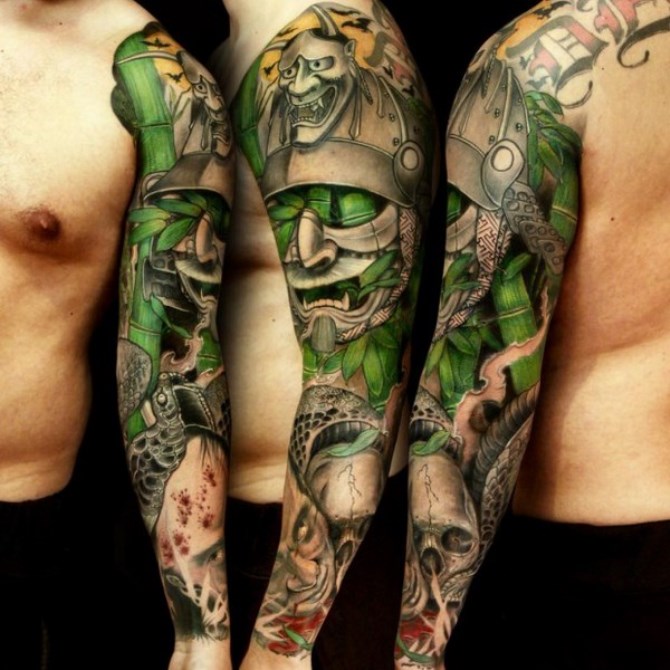
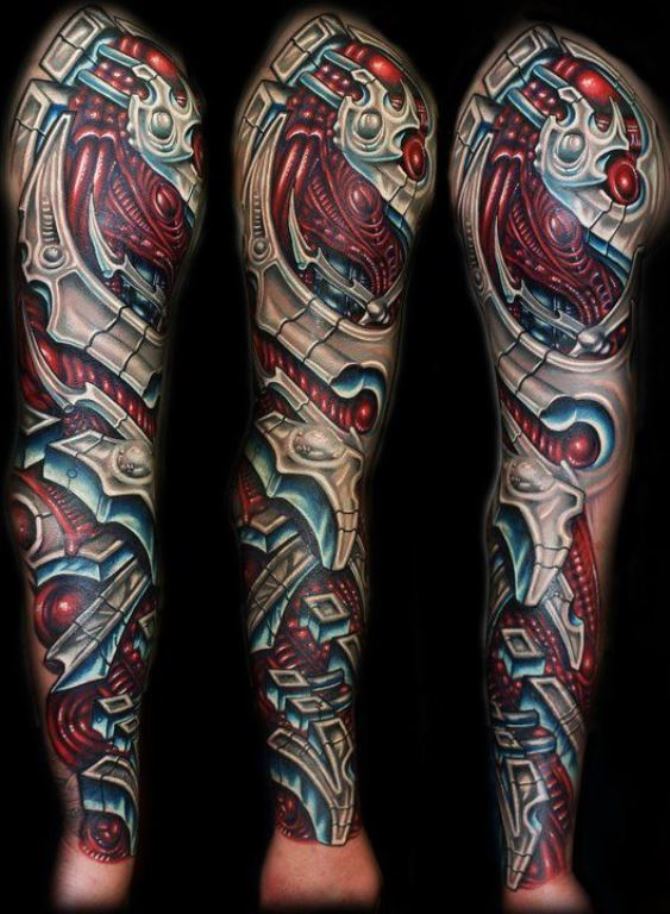
Oriental Tattoo Full Sleeve
An Oriental Tattoo Full Sleeve is a breathtaking masterpiece of art, intertwining intricate designs inspired by Eastern culture. From elegant dragons to delicate cherry blossoms, each element tells a story of tradition and symbolism.
These sleeves often portray themes of strength, wisdom, and spirituality, reflecting the rich heritage of Asian aesthetics and beliefs.
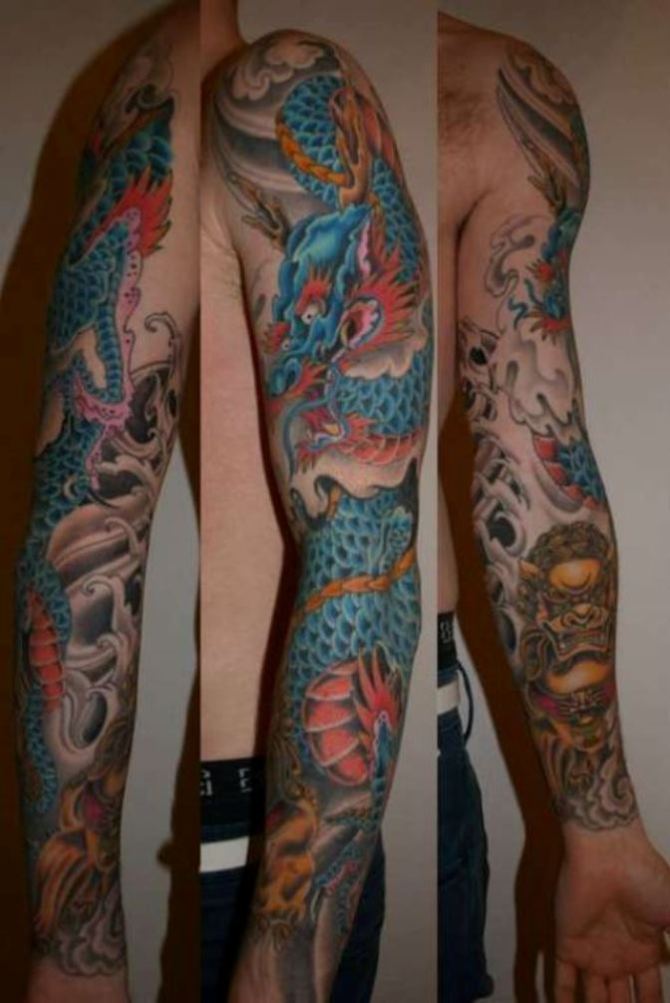
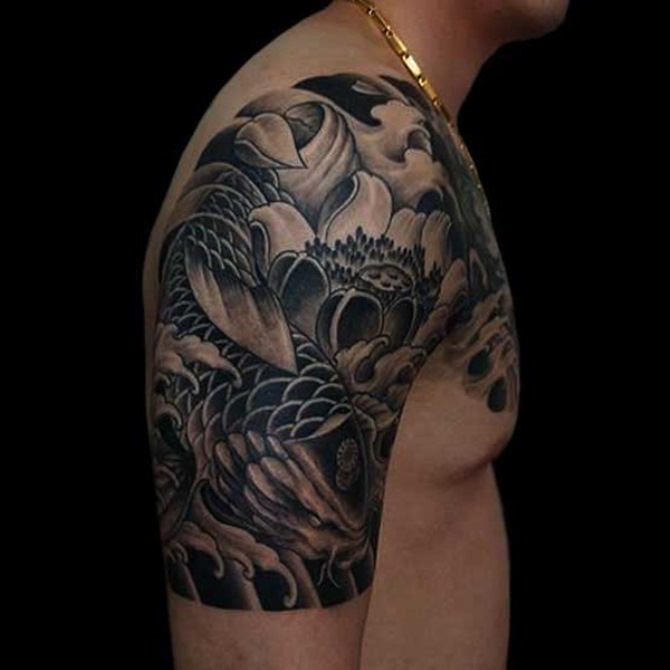
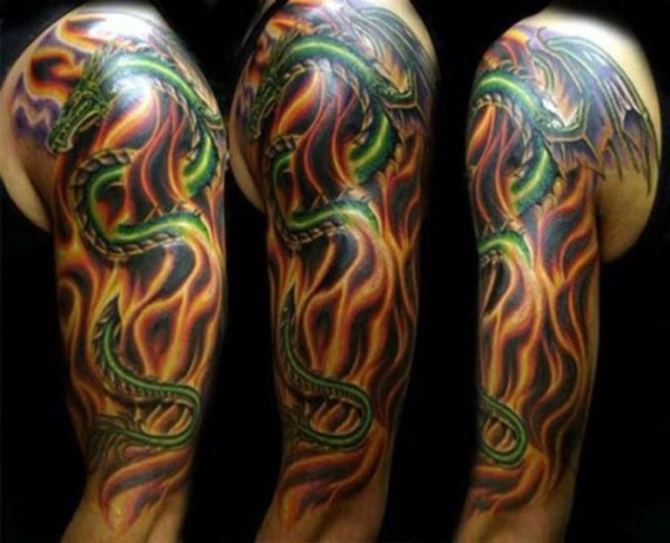
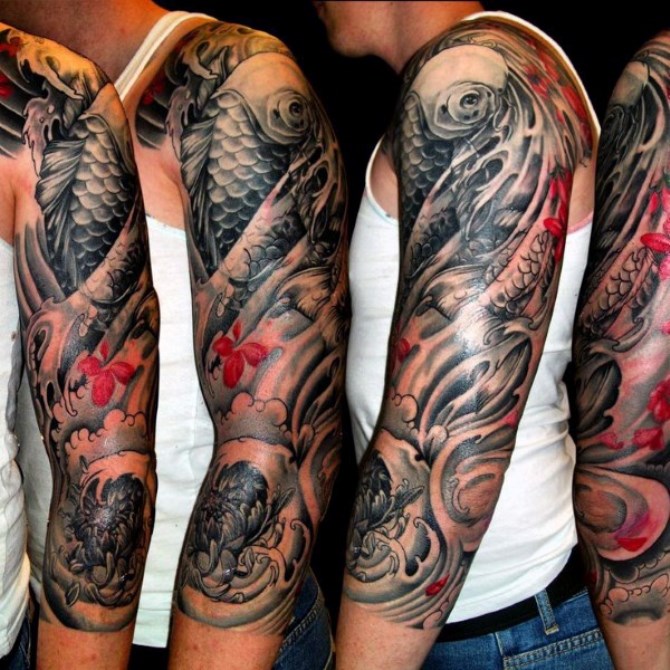
Black and Grey Sleeve Tattoo
A black and grey sleeve tattoo is a stunning artwork crafted using various shades of black and grey ink. It’s a versatile style known for its depth and realism, often depicting intricate designs, portraits, or landscapes.
This monochromatic palette allows for dramatic contrasts and subtle shading, resulting in a timeless and sophisticated aesthetic that can tell deeply personal stories or showcase intricate details with a touch of elegance.
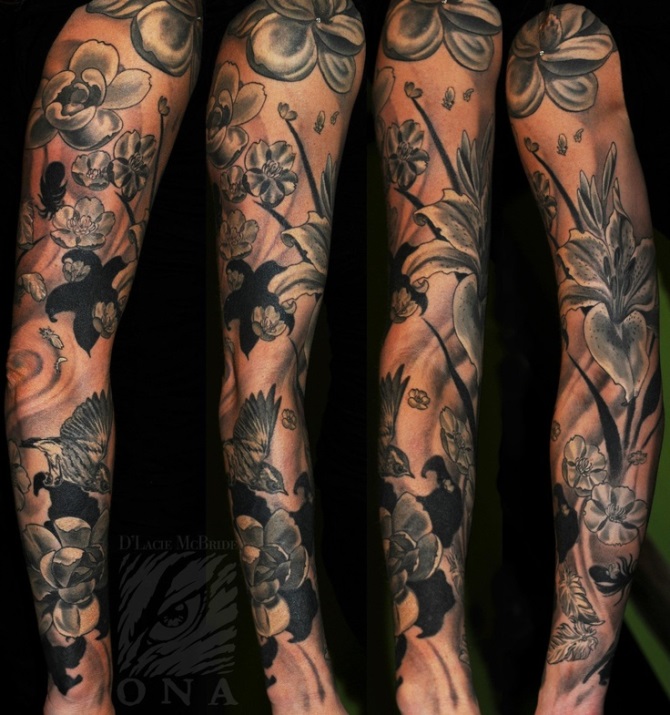
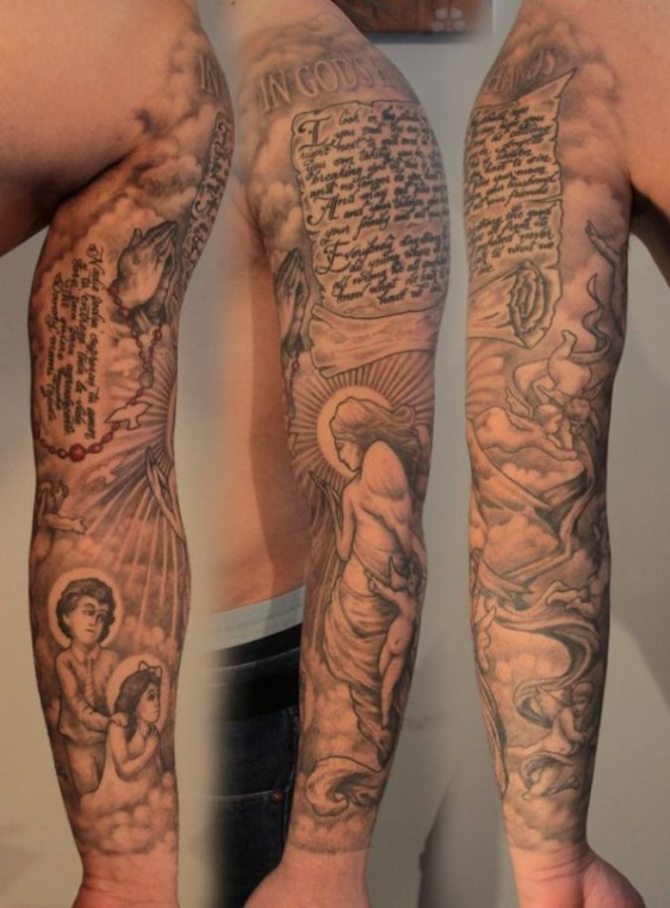
Dragon Tattoo on Arm
The dragon tattoo on the arm is a fierce emblem of strength, wisdom, and protection. Its sinuous lines coil around the arm, embodying ancient myths and tales of bravery.
Often chosen for its striking visual appeal, it also carries cultural significance, representing auspicious qualities and the triumph of good over evil in many Eastern traditions.
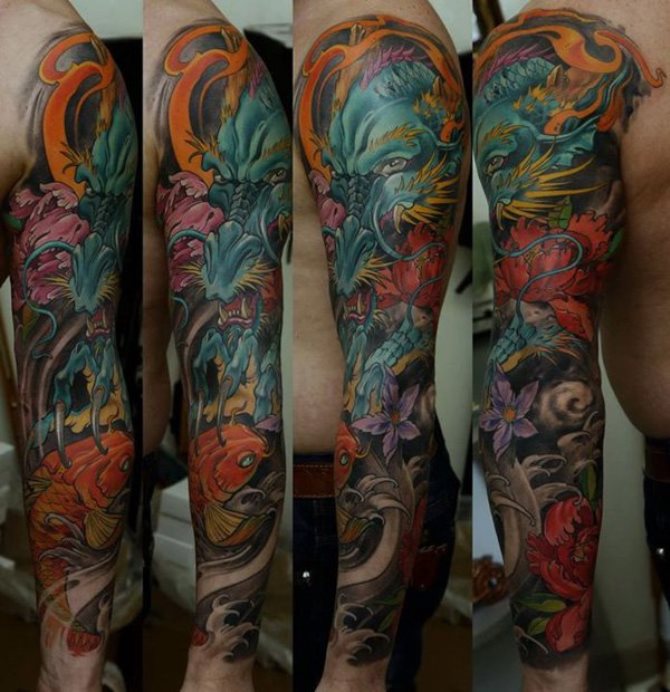
Japanese Tiger Sleeve Tattoo
The Japanese Tiger Sleeve Tattoo is a captivating blend of traditional Japanese artistry and symbolic meaning. It typically features a fierce tiger depicted with vibrant colors and dynamic movements, symbolizing strength, courage, and protection.
Often accompanied by elements like cherry blossoms or waves, it embodies themes of resilience and the relentless pursuit of one’s goals.
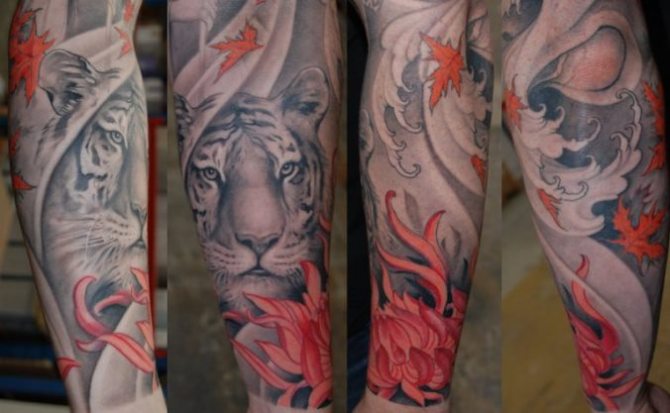
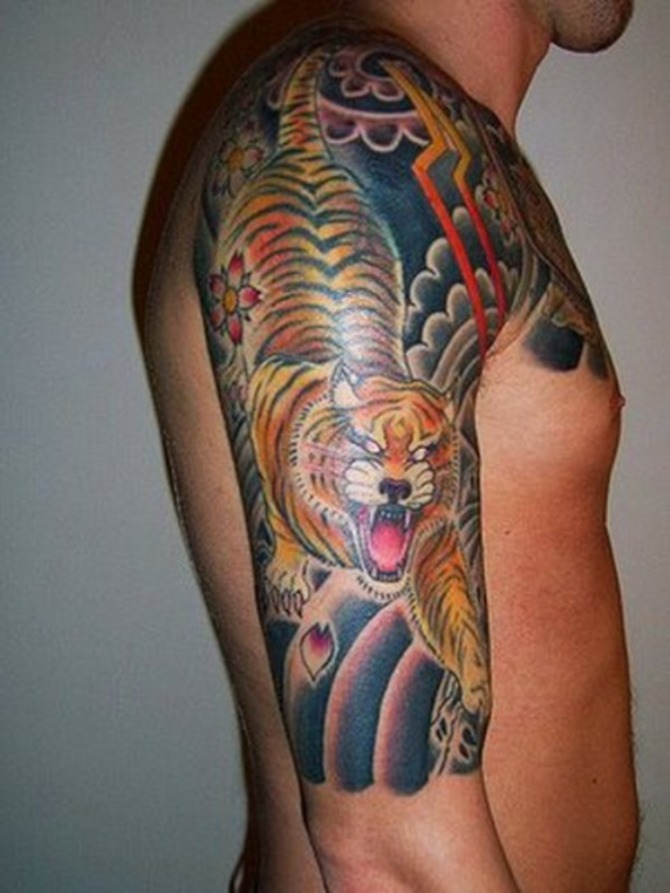
Japanese Samurai Sleeve Tattoo
A Japanese Samurai Sleeve Tattoo embodies honor, courage, and discipline, reflecting the ancient warrior spirit of Japan. Intricate designs depict legendary samurai warriors, cherry blossoms, and traditional motifs like waves or dragons.
Each element symbolizes resilience, loyalty, and mastery, creating a powerful visual narrative of strength and tradition on the wearer’s arm.
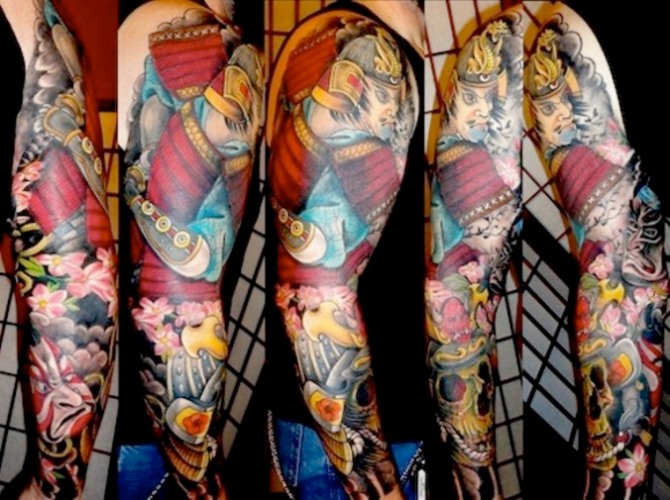
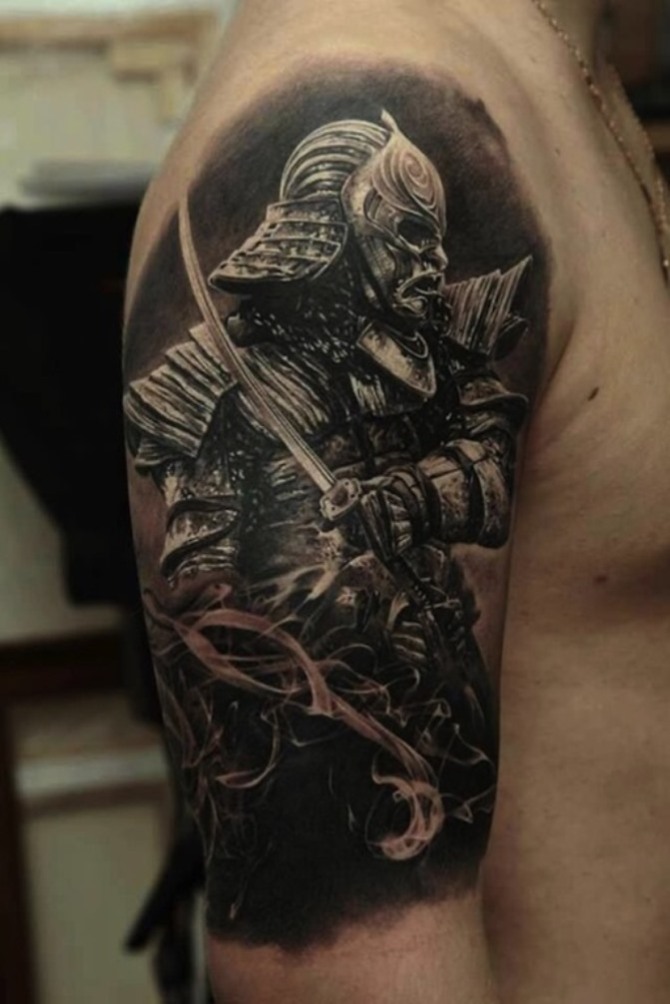
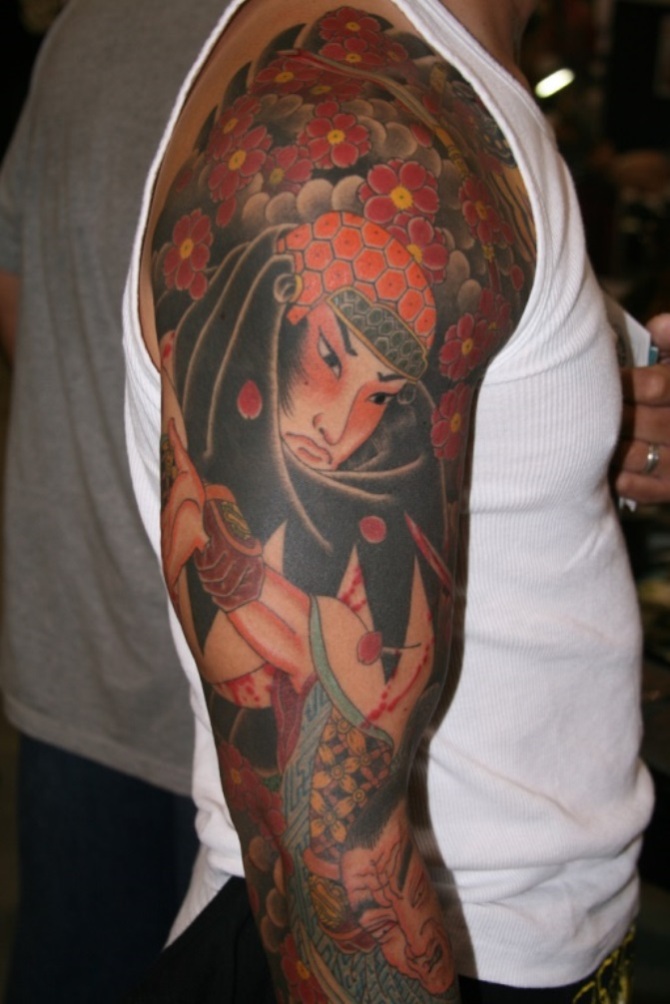
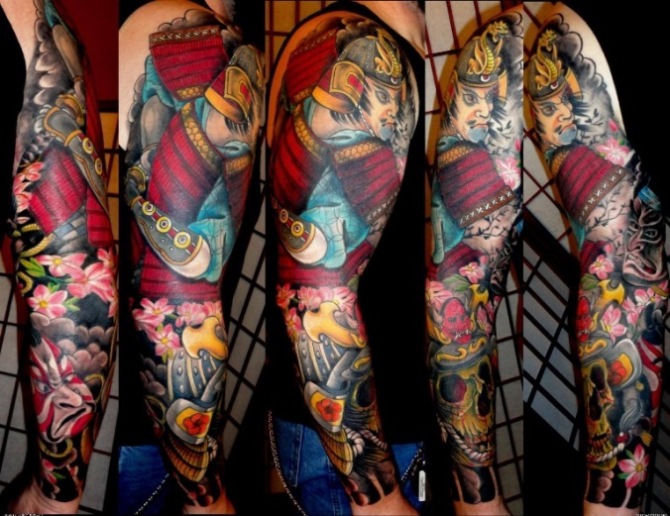
Federico Ferroni Tattoo
Federico Ferroni, a renowned tattoo artist, is celebrated for his distinctive style blending realism and surrealism. With intricate details and bold colors, Ferroni’s work captures emotions and narratives, earning him acclaim in the tattoo community.
His passion for storytelling through ink has garnered a loyal following, making him a sought-after artist worldwide.
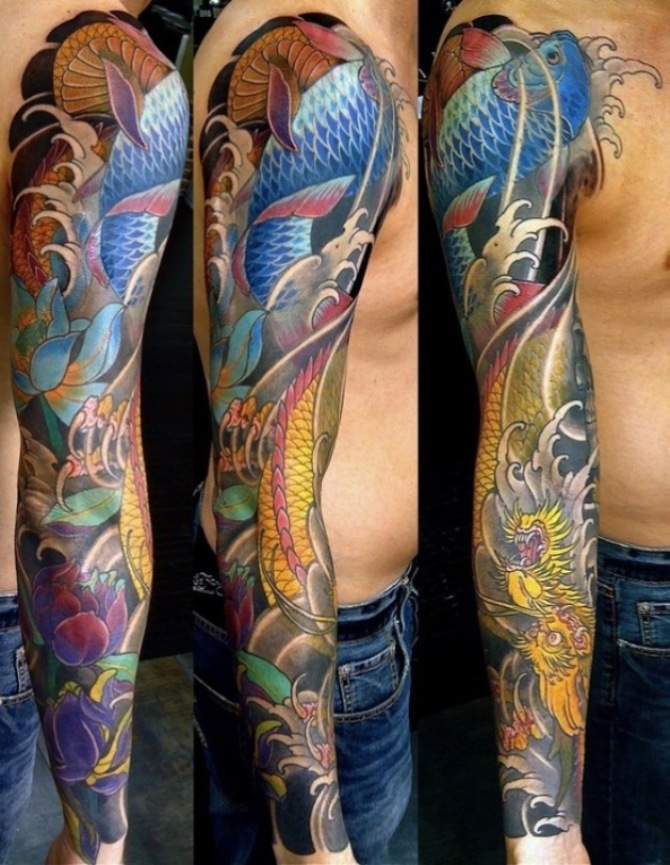
Japanese Warrior Tattoo Sleeve
A Japanese warrior tattoo sleeve is a stunning homage to Japan’s rich martial history and cultural heritage. It typically features intricate designs of samurai, geisha, or mythical creatures like dragons and phoenixes, symbolizing courage, honor, and resilience.
These tattoos often incorporate traditional Japanese motifs like cherry blossoms and waves, creating a powerful and visually captivating narrative of strength and tradition.
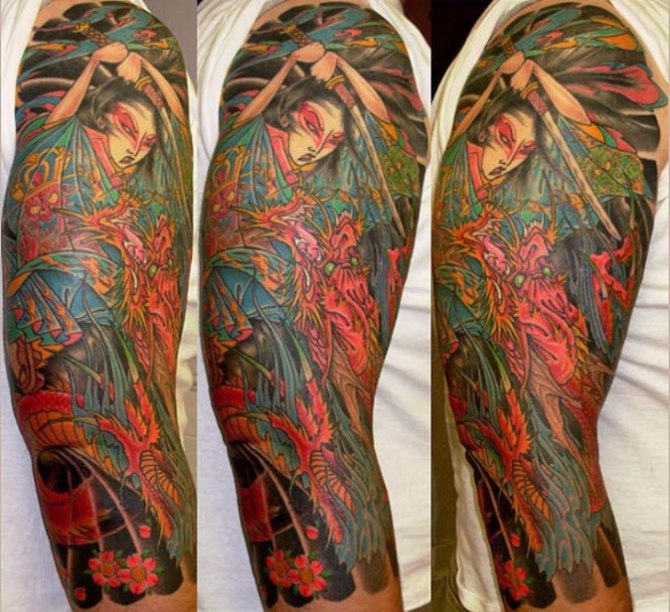
Conclusion
In conclusion, the artistry and cultural significance embedded in Japanese sleeve tattoos make them a captivating and timeless form of self-expression. The meticulous craftsmanship and attention to detail involved in creating a Japanese sleeve tattoo contribute to its allure.
Beyond being a mere inked design, it becomes a narrative, weaving together elements of tradition, symbolism, and personal meaning. Whether depicting traditional motifs like koi fish, cherry blossoms, or dragons, each Japanese sleeve tattoo tells a unique story on the canvas of the wearer’s skin.
Embracing a Japanese sleeve tattoo is not just embracing a stunning visual masterpiece; it is embracing a piece of art that resonates with the rich tapestry of Japanese culture and aesthetics.
Frequently Asked Questions
What is a Japanese sleeve tattoo called?
A Japanese sleeve tattoo is commonly known as a “irezumi.”
What is the popular tattoo in Japan?
Cherry blossoms, koi fish, and dragons are popular themes in Japanese tattoos.
What is the theme of Japanese tattoo sleeves?
Japanese tattoo sleeves often feature traditional motifs like nature, mythology, and symbolism.
What is anime style tattoo?
Anime-style tattoos draw inspiration from Japanese animated art, characterized by vibrant colors and distinct cartoonish features.
What are the rules of Japanese tattoos?
Japanese tattoo etiquette emphasizes respect, cultural awareness, and avoiding visible tattoos in certain settings.
What is a Yakuza tattoo?
A Yakuza tattoo is typically associated with the Japanese criminal underworld, showcasing allegiance and status within the organization.
What is a Kaizen tattoo?
A Kaizen tattoo represents the Japanese philosophy of continuous improvement, symbolizing personal growth and progress in various aspects of life.
To know more about tattoos and get inspired to ink , you may visit these blogs Flower sleeve Tattoos,
Sleeve tattoo for women, 20 Color Sleeve Tattoos and 96 Wolf Tattoos
Daniel Stewart is a renowned tattoo design expert With years of experience in the industry, Daniel is known for his creativity and attention to detail. Through this platform, he shares valuable insights, tips, and inspiration for both aspiring tattoo artists and enthusiasts. Daniel's expertise spans various styles, from intricate geometric patterns to vibrant watercolor designs. His dedication to personalized and meaningful tattoos sets him apart in the industry.
